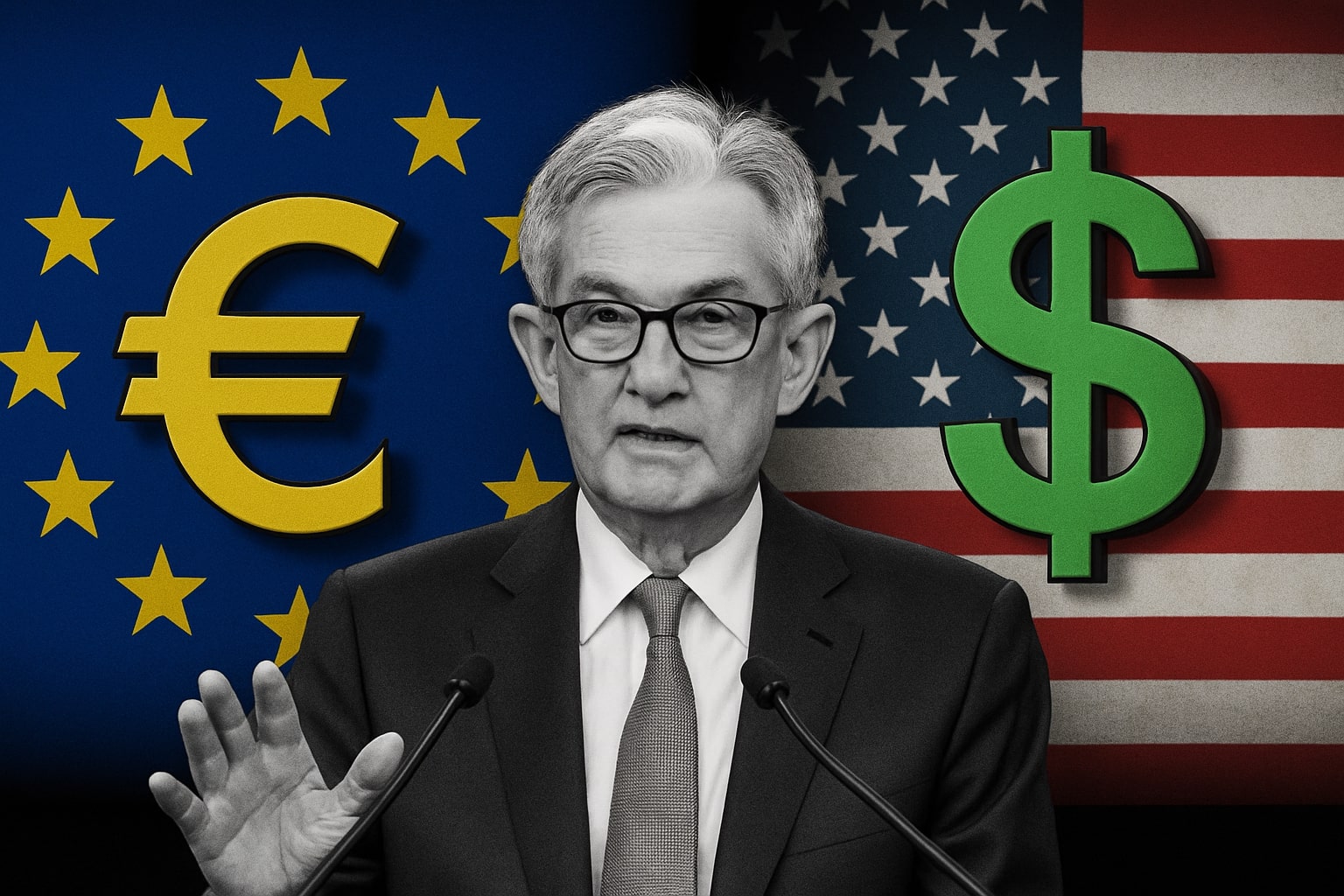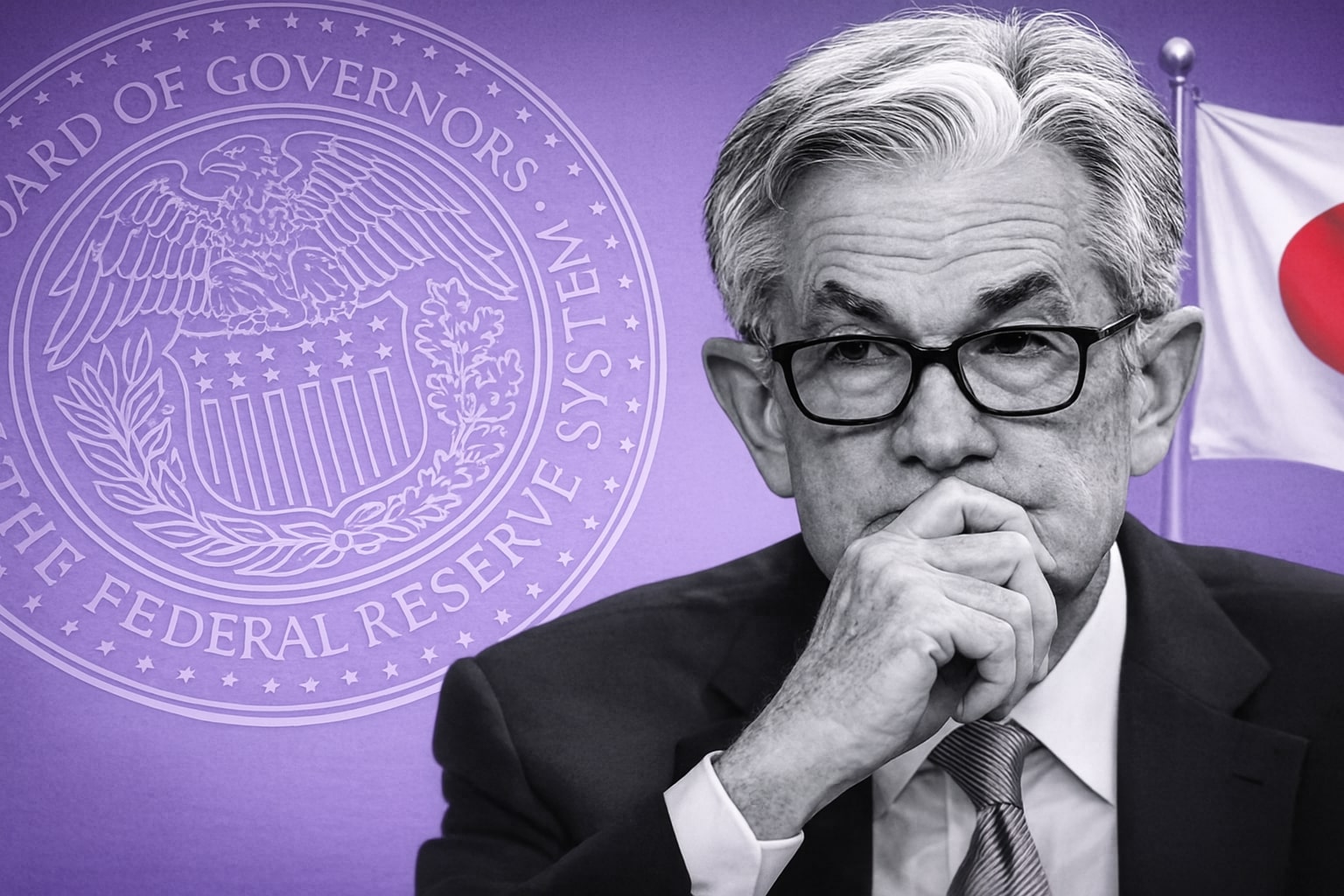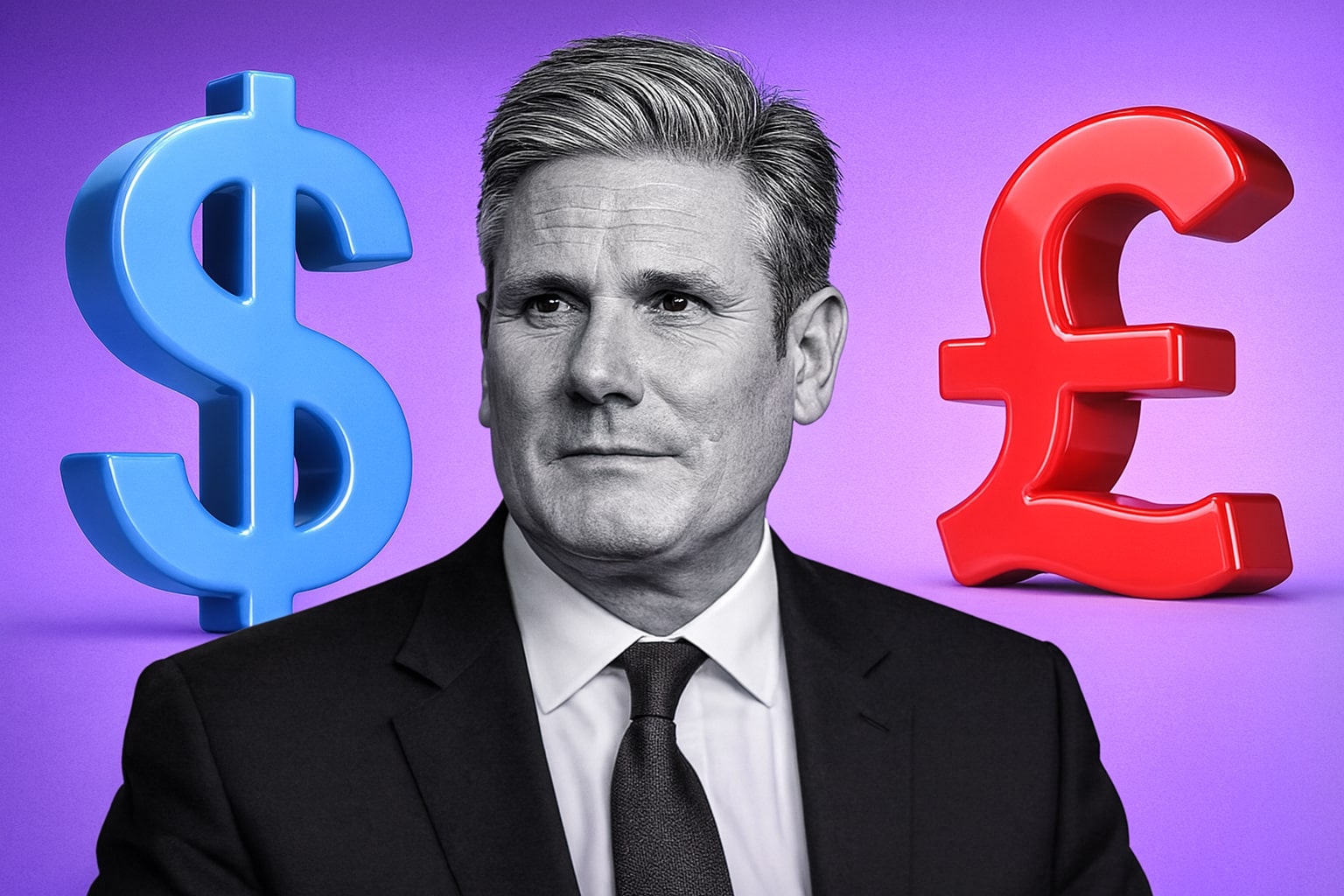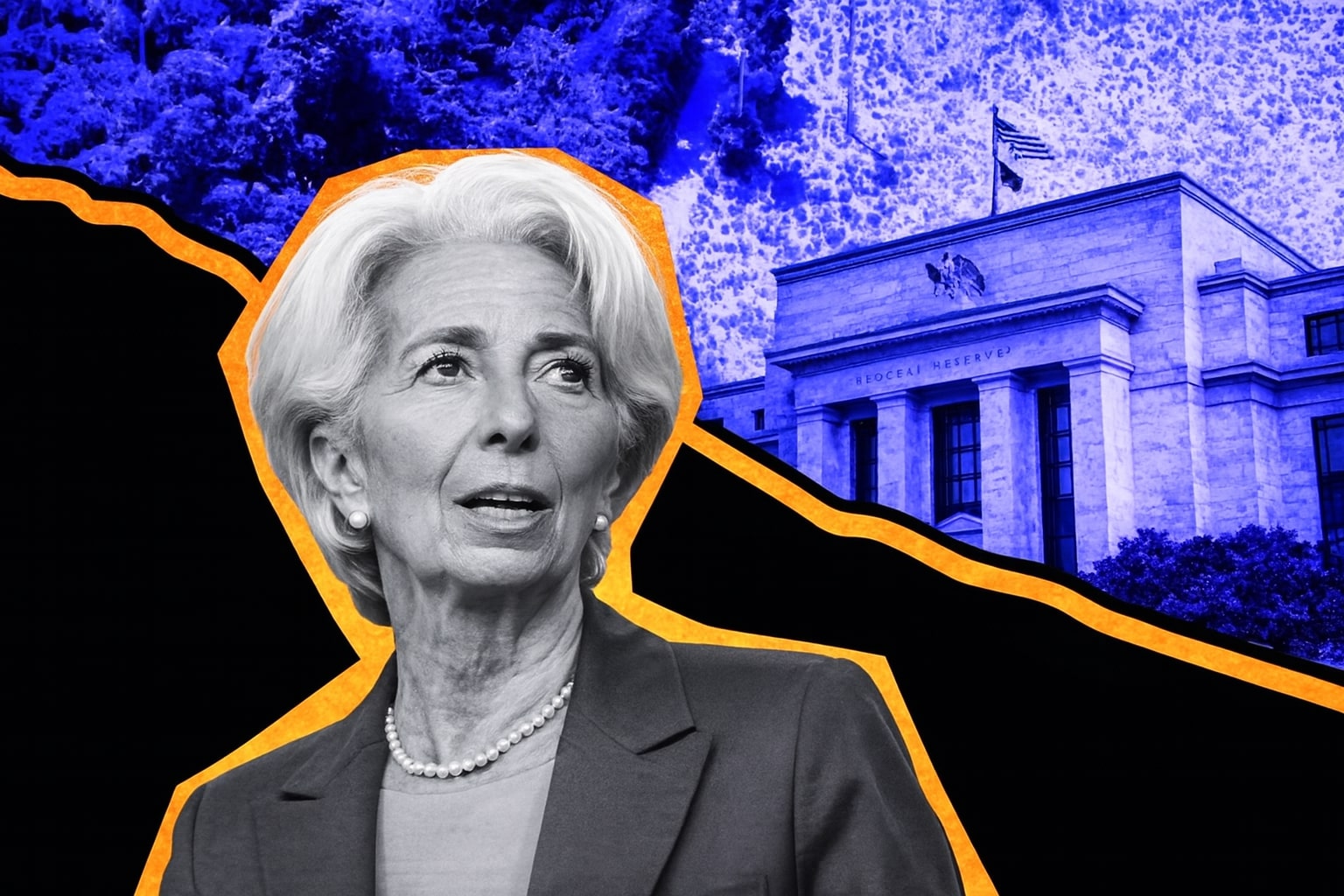
EUR/USD Price Forecast - Eur to Dollar Steadies at 1.1630 as Markets Brace for Fed Rate Cut and ECB Decision
Euro trades in a tight 1.16–1.17 range before Powell’s rate cut announcement; weaker U.S. data, cautious ECB stance, and trade optimism between the U.S. and China shape short-term direction | That's TradingNEWS
EUR/USD Forecast: Pair Holds Near 1.1630 as Traders Brace for Fed Rate Cut and ECB Decision
EUR/USD trades around 1.1630, moving within a narrow corridor between 1.1600 and 1.1685 as investors await key policy shifts from both the Federal Reserve and the European Central Bank. The market stands on edge before a pivotal 25-basis-point U.S. rate cut, expected to lower the federal funds rate to 3.75%–4.00%, while the ECB is projected to keep its deposit rate unchanged at 3.75% for the third consecutive meeting. This divergence in policy paths continues to favor the U.S. dollar (USD), with the euro (EUR) struggling to extend gains despite resilient short-term support levels near 1.1620. The next 48 hours could define the pair’s next directional breakout.
The Fed’s move is largely priced in, yet the tone of Chair Jerome Powell’s remarks will dictate whether EUR/USD holds its current footing or resumes its decline. If Powell hints at additional easing in December, the dollar could soften, pushing the pair above the 1.17–1.1750 resistance zone. However, a more conservative tone would likely strengthen the greenback and drive EUR/USD toward 1.16 or even 1.1540. Recent U.S. data underscores the fragility of the economy — consumer confidence dropped to 94.6, its lowest level since April, while job growth momentum slowed amid rising corporate layoffs. These trends justify the rate cut but leave the Fed cautious about overshooting policy accommodation.
Meanwhile, the Eurozone continues to wrestle with stagnation. German manufacturing output and Eurozone GDP both underperformed expectations in Q3, reinforcing a sluggish growth narrative. The ECB, led by Christine Lagarde, is expected to stay on hold, signaling patience while monitoring inflation’s gradual moderation. The euro remains underpinned by narrowing yield spreads — the 10-year U.S. Treasury yield has retreated to 4.00%, compared with 2.28% for the German bund — yet the differential still leans toward dollar strength.
The geopolitical backdrop adds to the euro’s challenges. Optimism around a potential Trump–Xi trade accord, reportedly worth $350 billion, has improved global sentiment and reduced safe-haven demand, favoring the dollar. Easing trade tensions, particularly in semiconductors and agricultural imports, bolster risk appetite and weigh on defensive currencies. The U.S. Dollar Index (DXY) remains stable near 99.40, supported by capital inflows into dollar assets despite weakening domestic indicators.
Technically, EUR/USD remains confined within a multi-month consolidation between 1.1550 and 1.1750. The pair has reclaimed the nine-day EMA at 1.1630, hinting at mild bullish bias, but momentum remains subdued. Resistance sits at 1.1650, 1.1685, and 1.1710, while 1.1740–1.1750 marks a stronger ceiling that has repeatedly rejected upside attempts. On the downside, key support lies at 1.1600, followed by 1.1575, 1.1540, and the deeper 1.1470 zone. Momentum oscillators show a neutral setup, with RSI near 45 and the MACD hovering flat, suggesting that volatility will spike only after central bank clarity.
Read More
-
SMH ETF: NASDAQ:SMH Hovering at $350 With AI, NVDA and CHIPS Act Fueling the Next Move
16.12.2025 · TradingNEWS ArchiveStocks
-
XRP ETFs XRPI and XRPR: Can $1B Inflows Lift XRP-USD From $1.93 Back Toward $3.66?
16.12.2025 · TradingNEWS ArchiveCrypto
-
Natural Gas Price Forecast: NG=F Falls to $3.80–$3.94 as Warm Winter Kills $5.50 Spike
16.12.2025 · TradingNEWS ArchiveCommodities
-
USD/JPY Price Forecast - USDJPY=X Slides, BoJ 0.50% Hike, Fed Cut and NFP Set the Next Big Move
16.12.2025 · TradingNEWS ArchiveForex
Institutional positioning reflects caution ahead of the twin policy events. CFTC data reveal that net euro longs have fallen for three consecutive weeks, signaling fading conviction among hedge funds and asset managers. Option flow clustering between 1.16 and 1.17 highlights traders’ preference for neutrality, while 1-week implied volatility at 6.8% — its lowest in a month — shows expectations for muted pre-Fed price action. Once Powell’s statement hits, markets anticipate a breakout of roughly 100 pips in either direction.
Macro triggers for volatility are lined up. The U.S. Pending Home Sales report and ADP employment data will feed into the Fed’s growth narrative, while Germany’s 10-year bond auction and preliminary inflation numbers will influence ECB tone. Should Powell’s comments signal ongoing easing and Lagarde maintain restraint, the narrowing yield gap could gradually turn supportive for the euro, with potential for EUR/USD to retest 1.1770–1.1800. Conversely, a hawkish Powell or weak Eurozone data could send the pair back toward 1.1550 before stabilizing.
Sentiment remains balanced but fragile. Traders are effectively betting on policy divergence rather than regional data strength. A dovish Fed outcome paired with ECB caution could favor euro recovery above 1.17, while any hesitation from Powell to commit to further cuts would reinforce dollar dominance. For now, EUR/USD remains a range-bound market caught between global easing and regional stagnation.
Verdict: HOLD — EUR/USD likely to remain range-bound between 1.16 and 1.17, awaiting confirmation from the Fed and ECB before establishing a clear directional bias.



















